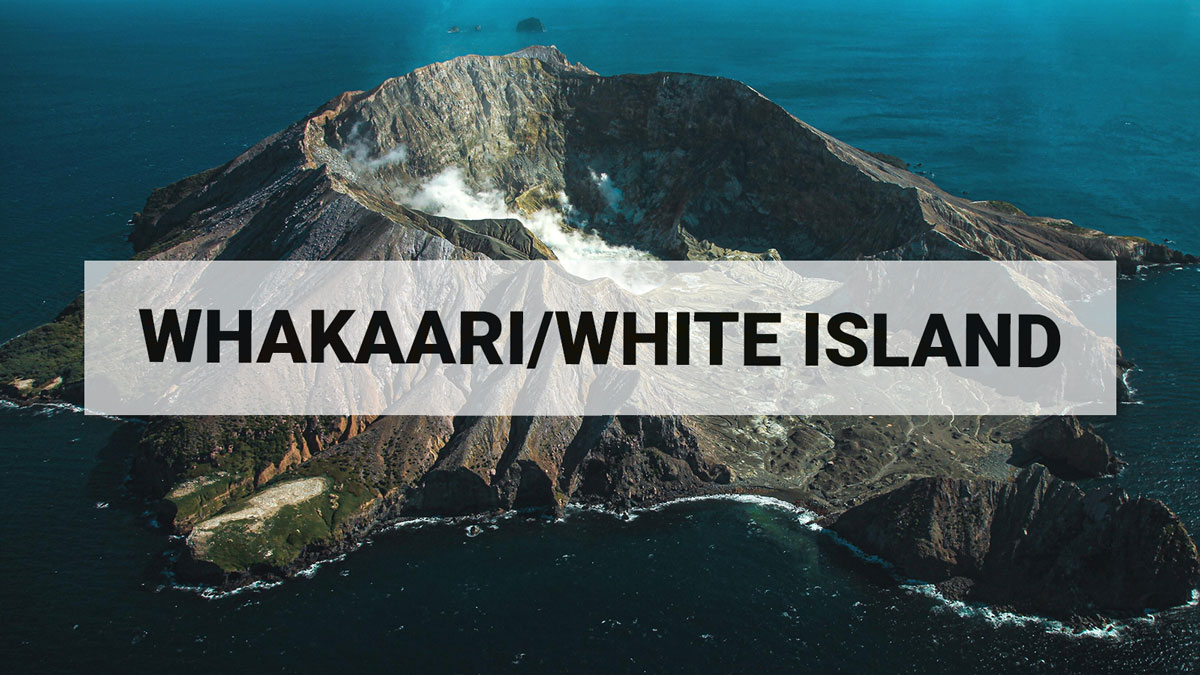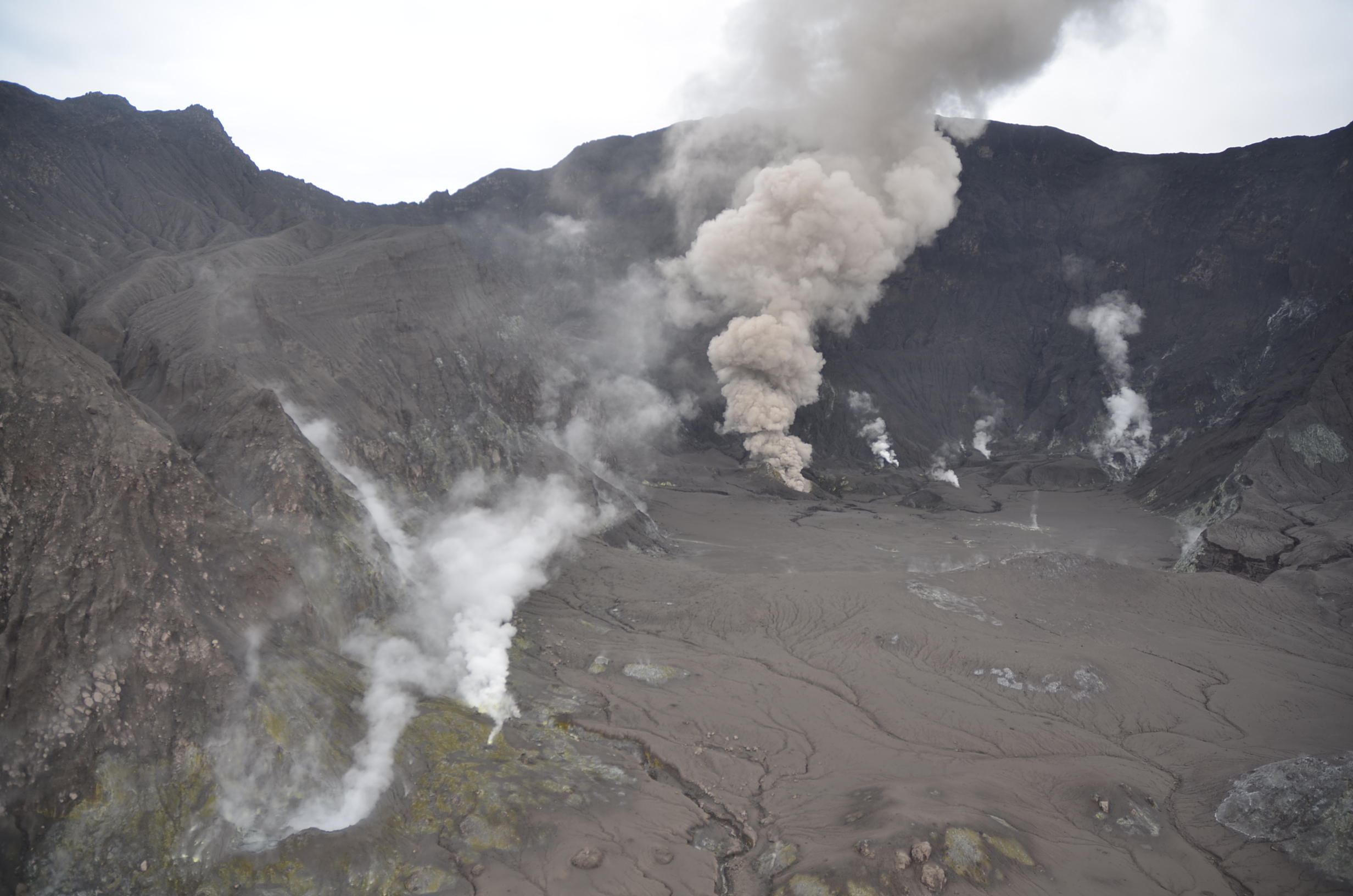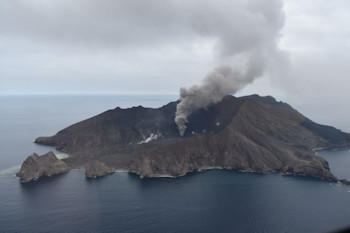
Continued minor ash emissions at Whakaari/White Island. Volcanic Alert Level remains at Level 3 and Aviation Colour Code at Orange.
The emission of steam, gas and minor amounts of volcanic ash continues at Whakaari/White Island. Ash plumes from the active vent have been ob-served during recent observation and gas flights. Due to this ongoing volcanic activity, the Volcanic Alert Level remains at Level 3 and the Aviation Colour Code at Orange.
Minor amounts of volcanic ash were observed in the steam and gas plume from the active vent during our recent monitoring flights near Whakaari/White Island. Over the same period, our colleagues at MetService detected minor amounts of volcanic ash in the plume using satellite imagery. Depending on the wind strength and direction, this can be seen from the Bay of Plenty coast and webcams at Whakatāne and Te Kaha, either as a hazy plume trailing downwind from the volcano or as a vertical plume above the volcano. The Volcanic Alert Level remains at Level 3 (minor volcanic eruption).
Recent gas and observation flights, and satellite data, have confirmed that there is now near continuous emission of small amounts of volcanic ash from the active vent at Whakaari/White Island (Fig. 1). Local weather conditions have a significant impact on how the activity appears when viewed from the Bay of Plenty coast. Under calm conditions the volcanic plume can rise to 1-2000 ft (~300 – 600 m) above the volcano, but as the wind speed increases the plume height decreases, and a long hazy plume can be seen trailing off downwind for tens of kilometres (Fig.2).
The volcanic ash emissions remain relatively steady from the active vent, which has not changed much in size or shape. The Wellington VAAC (Volcanic Ash Advisory Centre) has issued several advisories for the airborne volcanic plume that can encroach into active aviation airspace. This has resulted in some flight cancellations due to aviation regulations and airline policy. However, it is important to note that while the volcanic plume has at times travelled above the Bay of Plenty coast, the amount of ash it carries remains very small and is not expected to fall back on the mainland; minor ash fall is observed on or near the island itself.
Monitoring data from our gas flights, thermal infrared temperature measurements and the sulphur dioxide (SO₂) emissions detected by satellite, are consistent with the previously observed levels of volcanic activity, including steady ash emissions. The amount of volcanic gas emitted is steady, while the vent temperatures have increased to around 460 °C; this is still below the temperatures of up to 650 °C measured in 2020 and 2021. Minor night glow at the volcano has also been captured by the Te Kaha camera and is consistent with the higher vent temperatures; this 'glow' is only visible in the near infra-red with our camera and unlikely to be visible with the naked eye. During recent observation flights, we have noticed a decrease in new impact craters near the vent, indicating less explosive activity.
Steam, gas, and volcanic ash emissions remain steady as they have been for the past few months. Due to our lack of on-island monitoring, it is possible that short-duration eruptions are occurring without being directly recorded. Recent activity is consistent with minor eruptive activity and therefore, the Volcanic Alert Level remains at Level 3. The continued presence of volcanic ash emissions mean that the Aviation Colour Code remains Orange. These levels acknowledge the ongoing volcanic activity but also reflect some of the uncertainty related to the current low level of monitoring.
GNS Science’s Volcano Monitoring Group and National Geohazards Monitoring Centre will continue to closely monitor Whakaari/White Island for any changes in activity. Without sensors on the Island, our monitoring continues to rely on remote cameras, satellite imagery, and periodic observation and gas flights to monitor Whakaari. We will provide further updates when information becomes available.
Further information about the Volcanic Alert Levels and what they mean can be found here.
For information about the impacts of the steam and gas plume should it reach the coast, follow the advice from:
Oliver Lamb
Duty Volcanologist
Media contact: 021 574541 or media@gns.cri.nz



